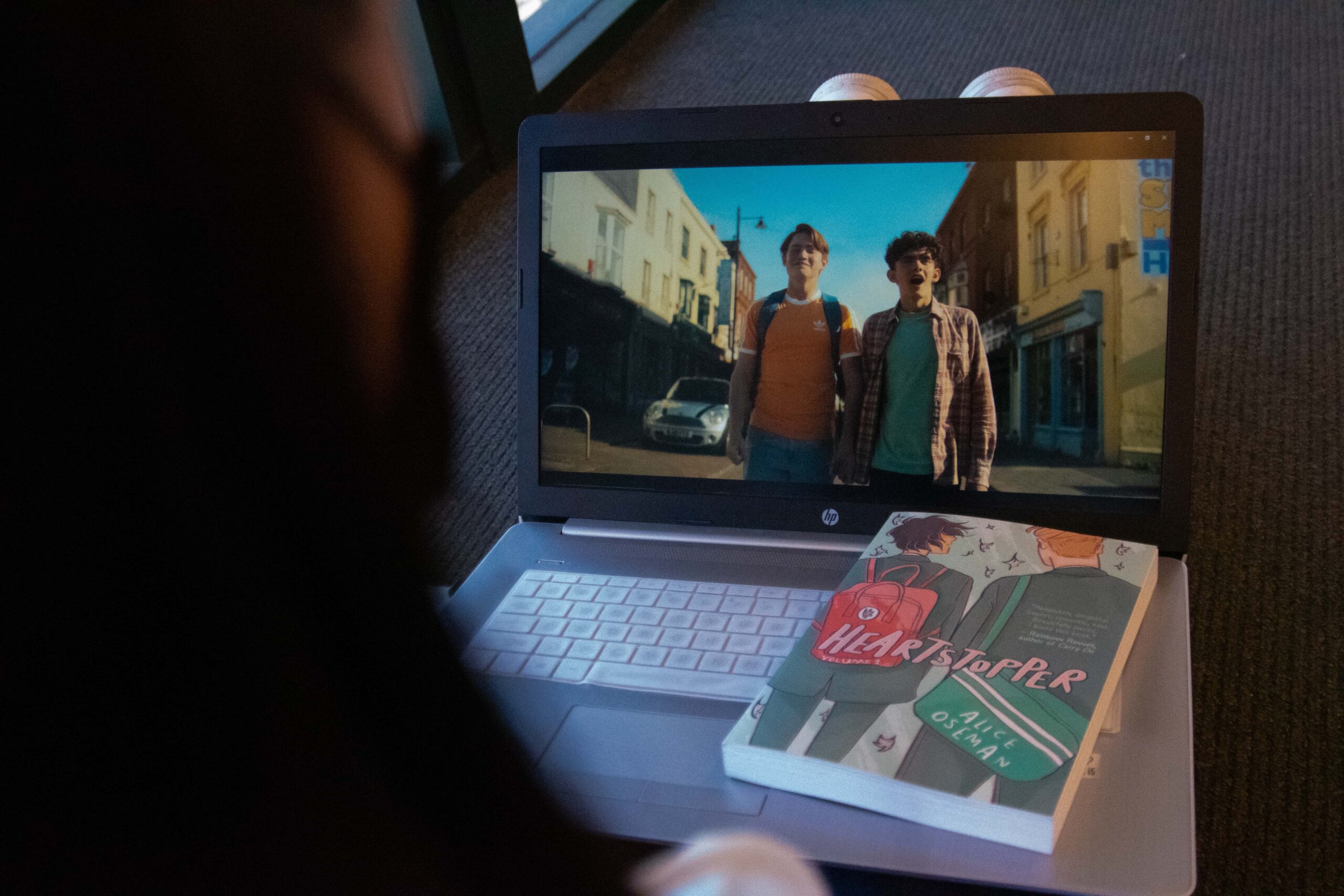Netflix’s adaption of the popular graphic novel “Heartstopper” released on April 22 with outstanding reviews. Photo by Caroline Ngo.
By Rebecca Do
Warning: May contain spoilers, discussions of homophobia
Netflix’s “Heartstopper,” adapted from the British webtoon-turned-graphic novel by Alice Oseman, showcases holistic queer representation in a refreshing way, perfect for spring.
Charlie Spring, played by Joe Locke, is a Year 10 in school (that’s the sophomore year for us Americans). He’s athletic, plays the drums and he’s also the only out-gay-kid at Truham Grammar School for Boys.
Nick Nelson, played by Kit Connor, is in Year 11. According to Charlie in the novels, “He likes rugby, Formula One, animals (especially dogs), the Marvel Universe, the sound felt tips make on paper, rain, drawing on shoes, Disneyland and minimalism. He also likes me.”
This beautiful coming-of-age teen romance isn’t just a Tik Tok trend, it’s also one of the greatest romance series Netflix has ever released.
Season one consists of eight episodes: “Meet,” “Crush,” “Kiss,” “Secret,” “Friend,” “Girls,” “Bully” and “Boyfriend.”
The events of the book are acted out meticulously–there’s nothing missing from the show. Even the smaller nuances, like the way the characters text, to the animated doodles that have that simplistic Oseman flair are included.
Episodes one through four illustrate Charlie and Nick’s relationship blooming, with Elle (played by Yasmin Finney) and Tao’s (played by William Gao) relationship as a side couple.
It’s rare to have a straight couple be the supporting ones, but they aren’t the only other side couple. Tara (played by Corinna Brown) and Darcy (played by Kizzy Edgell) are lesbians who attend Higgs, Truham’s female counterpart.
So far, the diversity and representation in the show is amazing. The treatment of queer people and queer relationships is sad to see, but it’s real. Charlie right away is shunned by his rugby peers, and Darcy and Tara are made fun of for existing and Elle is inadvertently shunned by her Higgs peers for being transgender.
The main difference between the novel I’ve noticed right away was the fact that Aled, Charlie’s friend, wasn’t in the show. Isaac (played by Tobie Donovan) had taken his place instead. Imogen (played by Rhea Norwood) was also added to the show, something that I wasn’t a fan of. She’s ignorant of what she says and treats Darcy and Tara differently after they come out as a couple. Her “I’m not, like, homophobic. I’m an ally,” quote made me laugh until I couldn’t anymore. Needless to say, I wasn’t the biggest fan of her character.
The reason Oseman decided not to include Aled is that having him in Heartstopper would have changed the major events in their other book, “Radio Silence.”
Episodes four through eight dive into Nick’s and Charlie’s struggle with being in a relationship. Nick, just now coming to terms with his sexuality, is still confused and scared and understandably so.
Episode seven, “Bully,” was the best episode, but not in the way you’d think. Charlie has been relentlessly teased by his rugby teammates behind his back. Harry Greene, Nick’s rugby friend, and Charlie’s tormentor makes fun of Charlie for being gay. The homophobia in the series is inadvertent but direct simultaneously which reflects real-life homophobic instances.
The season ends with Nick coming out to his mom, and him ready to come out to the rest of the world. He shouts on the beach, verbatim to the novels, “I like Charlie Spring! Inaromanticwaynotjustafriendway!”
Overall, “Heartstopper” is a breath of fresh air that captures the queer struggle in a way that is true-to-life. It is so important that queer youth have media they can look at and be able to say, “they’re just like me.” The world needs more non-fetishistic representation of LGBTQ+ folk, and I’m looking forward to a season two, Netflix.






